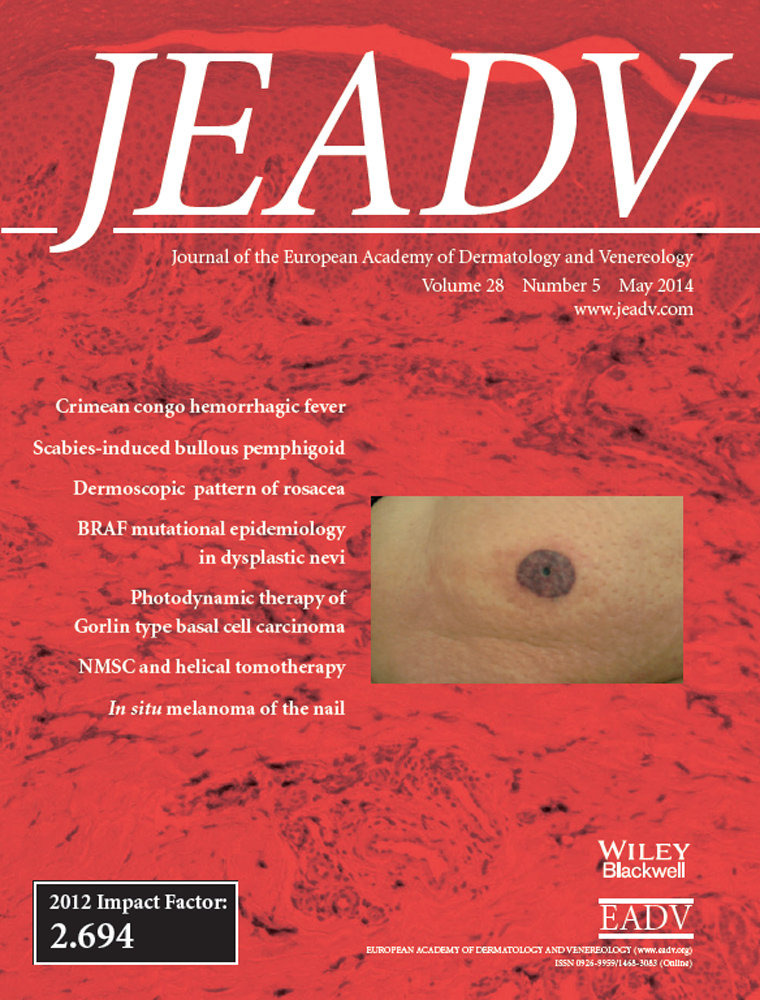BRAF mutational epidemiology in dysplastic nevi: Does different solar UV radiation exposure matter?
Conflict of interest
None declared.Funding sources
This study has received funding from the Lebanese National Council for Scientific Research Organization.Abstract
Background
Proto-oncogene B-Raf (BRAF) mutation rates have been reported in nevi and melanomas of homogeneous Caucasian cohorts.
Objective
To study the demographics of BRAF mutations in dysplastic nevi of populations with differing potential solar UV radiation exposure.
Methods
Extended BRAF testing for 9 mutations in 125 dysplastic nevi from 101 patients, derived from populations with differing potential UV radiation exposure rates (Lebanon and Saudi Arabia), was performed. Clinical and microscopic parameters were recorded.
Results
BRAF mutation status was carried out for 101/125 (80.8%) cases with an overall mutation rate of 62.4% (63/101). V600E (c.1799T > A) was the predominant mutation, found in 61/63 (96.8%) cases. BRAF mutation rate differed significantly by potential UV radiation exposure (Lebanon: 53.4%, Saudi Arabia: 74.4%, P < 0.05). A 43.8% discordant mutation rate (7/16 patients) was found in patients with multiple nevi, including 2 patients with different BRAF mutations. Microscopic examination subdivided the dysplasia into mild (n = 24), moderate (n = 60) and severe (n = 41) with trunk predominance (72.8%). Higher rates of pigment in the stratum corneum were identified in Saudi Arabia (P < 0.05). No statistical significant increase in BRAF mutation rate was noted with advanced architectural and cytological atypia. Parameters associated with a negative BRAF mutation status included upper extremity location, regression, cohesiveness and presence of suprabasal melanocytes (P < 0.05). Positive BRAF mutation status was reasonably predicted by multivariate binary logistic regression by 2 independent predictors: Geographic location and compound nevus type.
Conclusions
In our Near Eastern cohort, the BRAF mutation rate varied significantly by geographic location. In patients with multiple dysplastic nevi examined, discordant BRAF mutation status potentially negates an underlying constitutional predilection.




